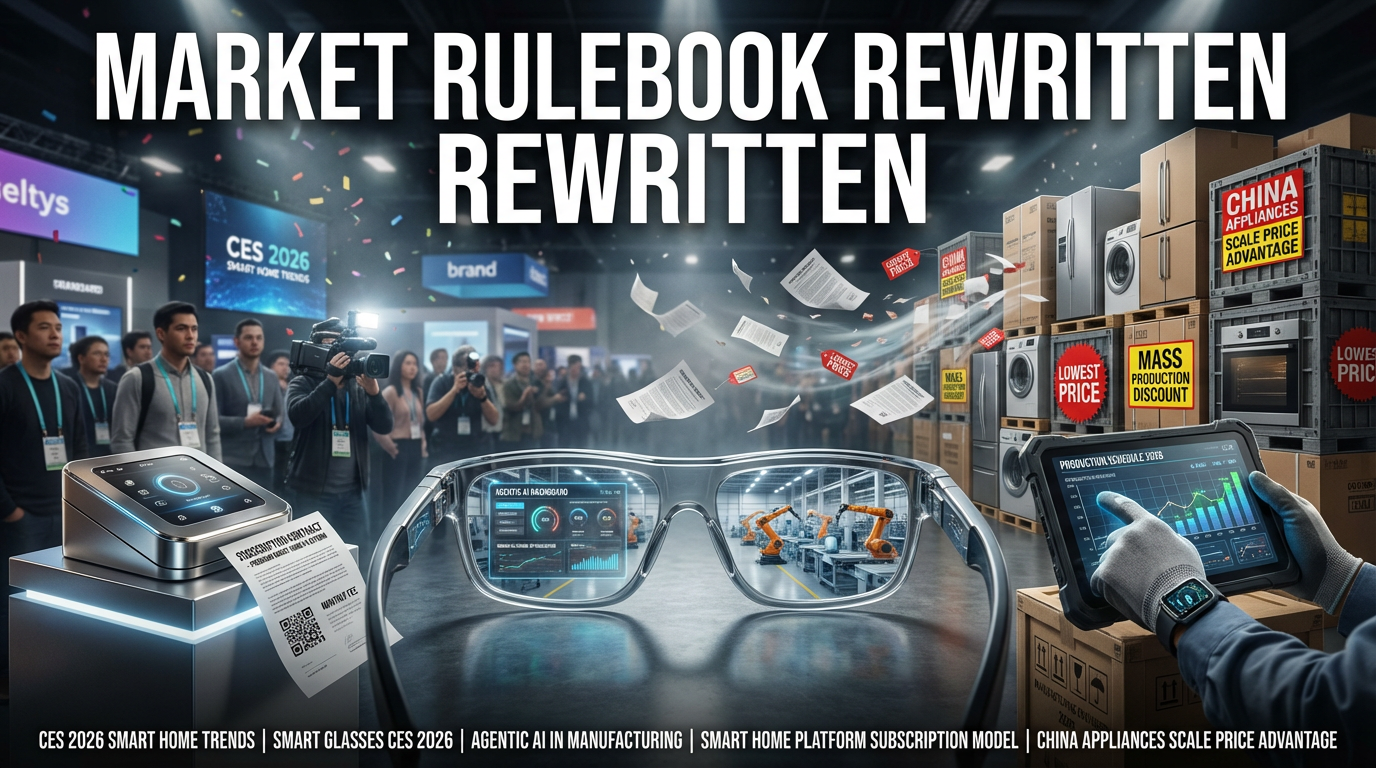The AI Revolution and South Korea's Future: The Importance of Policy and Response Strategies
Recently, the AI revolution has become not just a technological change but a structural, global paradigm shift. While some companies like Hynix and Naver are trying to adapt quickly to this change, concrete national-level policies and support are still lacking. In this article, I will examine the impact of the AI revolution on us and explain why South Korea needs to respond quickly in terms of policy.
1. What is the AI Revolution?
- Technological Revolution: As AMD's Lisa Su said, the current AI revolution is considered greater than all previous technological changes combined.
- Economic Transformation: AI goes beyond simple automation, replacing and supplementing human cognitive and reasoning tasks, fundamentally changing the existing industrial structure.
- AI-Controlled Flow: In particular, "Large Language Models (LLMs)" and data clusters, which are the core of AI, affect not only each country's economy but also data sovereignty.
2. South Korea's Current Situation and Problems
- Lack of Policy: Unlike the past when the Ministry of Information and Communication led the IT revolution, there is no government-level control tower for the AI revolution currently.
- Company-Centric Response: Some companies such as Naver and SK Hynix are independently carrying out AI-related projects, but they face difficulties in strengthening their global competitiveness due to limited resources and environment.
- Naver's 'Hyperclova X' initially showed promise, but it is now falling behind in competition due to a lack of funding and technological resources.
- Ecosystem Disconnection: If AI technology is not supported at the national level, South Korea could face the worst-case scenario of losing data sovereignty and becoming a global AI colony.
3. Global Response Examples
- United States: In addition to NVIDIA, large corporations such as Microsoft and Meta are investing massive capital to accelerate AI research. For example, MS has enabled exclusive data processing by purchasing more than 480,000 NVIDIA chips.
- China: China aims for self-reliance in AI technology and is utilizing massive government support and regulations. They are rapidly catching up, focusing on national-level research institutes and clusters for technological advancement.
- EU: The EU is also strengthening policy transparency and technology investment to secure data sovereignty.
4. What South Korea Needs to Do
4.1 Policy-Level Response
- Establishment of Specialized Ministries: It is necessary to establish specialized ministries such as the "AI Industry Ministry" or "Digital Technology Ministry" that go beyond the role of the Ministry of Information and Communication.
- Creation of Data and AI Research Funds: A national-level AI fund needs to be created to invest intensively in the construction of data centers and research funding.
- Collaboration with the private sector to provide opportunities for individual investors to participate can also be considered.
4.2 Corporate Support
- Strengthening the Role of Hynix and Samsung: It is crucial to cooperate with major global semiconductor companies such as SK Hynix and Samsung to expand the semiconductor supply capacity necessary for building domestic AI clusters.
- Forming Team Korea: Develop a strategy to jointly develop ultra-large AI models (Large Language Models) in cooperation with platform companies such as Naver and Kakao.
4.3 Improvement of the Investment Environment
- Optimization of Capital Markets: Policy incentives should be provided and the financial structure should be improved so that funds can flow to AI-related companies.
- Example: Provide tax benefits when investing in AI funds.
5. The Core of the AI Revolution: SK Hynix and HBM
5.1 Importance of HBM Memory
- HBM (High Bandwidth Memory) is considered the most important semiconductor in the AI revolution. In particular, NVIDIA and Broadcom are highly dependent on SK Hynix products.
- SK Hynix is currently establishing itself as a global leader in AI semiconductor technology by signing unprecedented contracts with NVIDIA and Broadcom.
5.2 New Technologies such as Glass Substrates
- As communication moves from silicon-based to optical communication, glass substrates are becoming increasingly important in AI semiconductors. Along with HBM, this area also needs to be actively invested in.
Conclusion
The current AI revolution is a golden opportunity for the South Korean economy to take another leap forward. Based on our experience of success in the past internet and mobile revolutions, we must actively respond to changes in the global technology landscape. If we miss this golden time, South Korea's future could face greater difficulties.
- Crafted by Billy Yang
[Related Articles at NextLens.Net]
*YouTube Source: [이효석아카데미]
– [월간아신 12월] AI 혁명의 폭풍속에서, 대한민국이 정말 답답하고 걱정됩니다 [풀영상]

War and Geopolitical Shifts, and the Growth Potential of K-Defense
1. The Trump 2.0 Era and Changes in the Global Political Landscape
- Geopolitical Shifts: With the US stepping back from its role as a global police force and Santa Claus, the world is reverting to its more natural state, where wars are more frequent.
- Potential for War Escalation: Countries in regions like East Asia and Eastern Europe are particularly vulnerable to geopolitical tensions. China and Russia's expansionist moves could have global ramifications.
- America's New Role: The Trump administration is likely to emphasize America First policies, pursuing a more inward-looking defense strategy. This may lead to demands for increased defense spending and greater military roles from allies.
2. Opportunities and Challenges for K-Defense
- Changes in the Eastern European Market: Eastern European countries such as Poland and Romania are shifting away from Russian and Chinese weaponry, reshaping the defense market. South Korea is emerging as a notable new supplier.
- South Korea's Strengths: South Korea has demonstrated strong capabilities in conventional weapons systems. This positions it to play a crucial role in the defense supply chains of Eastern Europe and other free democracies.
- K-Defense's Global Leap: South Korea’s ability to produce conventional weapons that combine advanced technology and reasonable pricing will be a significant opportunity to expand market share in the global defense industry.
3. Expected Major Trends
- Increased Defense Industry Investment: Global defense budgets are expected to rise. Many countries are likely to drastically increase military spending to ensure their own security.
- Strengthened Trade Boundaries: While cooperation among free democracies will strengthen, defense exchanges with China and Russia are expected to diminish.
- Enhanced Role for South Korea: South Korea and other nations with competitive conventional weapons capabilities like Israel and Turkey are likely to benefit significantly.
Conclusion
The world is once again standing at the cusp of new geopolitical changes with wars and the whims of dictators reshaping the landscape. It will be crucial to see how South Korea and other major nations formulate strategies and respond to these changes.
– Crafted by Billy Yang
[Related Articles at NextLens.Net]
*YouTube Source: [경제 읽어주는 남자(김광석TV)]
– [풀버전] 세계 질서 뒤흔드는 ‘분절화’의 결말은? 러우 전쟁·대만 갈등·미국의 후퇴… | 경읽남과 토론합시다 | 김정호 교수

Okay, here's the English translation, maintaining the original format:
This topic is very complex and sensitive, so let's break it down into several groups for a clearer explanation.
1. The Significance and Limitations of the US-ROK Alliance
- Significance: The US-ROK alliance has been the foundation for Korea's economic and military development. We cannot deny the significant assistance we received during the Korean War and in the subsequent economic reconstruction.
- Current Situation: However, alliances are not permanent. This is due to the harsh reality of "national interest" in international politics. The United States' interests are constantly changing, and we must prepare for this.
2. The Need to Strengthen Korea's Self-Defense Capabilities
- U.S. Priorities: The United States can abandon alliances if necessary, as it did with Vietnam and Afghanistan in the past. Therefore, there is talk about the need for Korea to develop the ability to defend itself.
- Well-Founded Concerns: The threat from North Korea's continuous development and testing of nuclear missiles is ongoing. If the U.S. were to tacitly accept or partially acknowledge North Korea's nuclear arsenal, we would be in even greater danger.
3. Discussions on Nuclear Armament and Practical Approaches
- Three Options for Nuclear Armament:
- Independent Nuclear Development: Withdrawing from the NPT (Nuclear Non-Proliferation Treaty) and attempting to develop our own nuclear weapons. However, this could trigger strong international backlash, making it impractical.
- Tactical Nuclear Redeployment: Redeploying U.S. tactical nuclear weapons in South Korea. However, many of the technologies and materials related to current tactical nuclear weapons have been decommissioned, making rapid implementation difficult.
- Securing Enrichment and Reprocessing Rights: A more realistic option is securing the technology to enrich uranium and reprocess spent fuel. If we utilize technology in this field, similar to Japan, we could maintain the capability to develop nuclear weapons if necessary.
4. Risks of North Korea-U.S. Negotiations and What We Need to Prepare
- Potential for Trump's Negotiations: There is concern that if a leader like Trump negotiates with North Korea, an agreement could effectively recognize North Korea's nuclear status under the guise of "nuclear disarmament."
- Our Response Measures: To prepare for this, it's crucial that we establish our own security strategies (independent nuclear armament, tactical nuclear redeployment, utilizing enrichment and reprocessing, etc.) even in the worst-case scenarios.
5. Key Implications
- Strategic Patience: This is not a matter for emotional responses; it requires a calm, national-level response. We must observe international trends and calmly develop long-term survival strategies.
- National Consensus: It is important to achieve national consensus, transcending political divisions. Excluding political disputes from security issues and speaking with a unified voice is key to this entire process.
Crafted by Billy Yang
[Related articles at NextLens.Net]
1. Scenario Analysis of North Korea's Nuclear Issue
2. The Future of the US-ROK Alliance and Korean Security
*YouTube Source: [머니인사이드]
– “당장 핵무장 시급하다” 미국만 믿다가 북한에 뒤처지게 생겼다 (조한범 박사 3부)

[Korean Summary]
[이효석아카데미]
“[월간아신 12월] AI 혁명의 폭풍속에서, 대한민국이 정말 답답하고 걱정됩니다 [풀영상]“
최근에 AI 혁명은 단순한 기술적 변화가 아니라 구조적, 글로벌 패러다임의 변화로 자리잡고 있어. 하이닉스, 네이버 같은 일부 기업은 이 변화에 빠르게 적응하려고 노력 중이지만 국가 차원에서의 구체적인 정책과 지원은 여전히 부족한 편이야. 이 글에서는 AI 혁명이 우리에게 미치는 영향을 살펴보고, 왜 한국이 정책적으로 발 빠르게 대응해야 하는지에 대해 정리해봤어.
1. AI 혁명이란 무엇인가
- 기술적 혁명: AMD 리사수 박사의 말처럼, 지금의 AI 혁명은 기존 모든 기술적 변화를 합친 것보다도 크다고 평가받고 있어.
- 경제적 전환: AI는 단순 자동화를 넘어서 인간의 인지와 추론 작업을 대체·보완하면서 기존 산업 구조 자체를 근본적으로 변화시켜.
- AI가 제어하는 흐름: 특히, AI의 핵심이라 할 수 있는 "라지 랭귀지 모델(LLM)"과 데이터 클러스터는 각국의 경제뿐 아니라 데이터 주권까지도 영향을 미쳐.
2. 한국의 현재 상황과 문제점
- 정책 부재: 과거에 정보통신부를 통해 IT 혁명을 이끈 전례와 달리, 현재 AI 혁명에 대한 정부 차원의 컨트롤타워는 보이지 않아.
- 기업 중심 대응: 네이버와 SK하이닉스 같은 일부 기업들이 독자적으로 AI 관련 프로젝트를 진행 중이지만, 제한적인 자원과 환경으로 인해 글로벌 경쟁력 강화에 어려움을 겪고 있어.
- 네이버의 '하이퍼클로바 X'가 초기엔 가능성 있어 보였지만, 자금과 기술 자원이 부족해 경쟁에서 뒤처지고 있는 상황.
- 생태계 단절: AI 기술을 국가 단위로 지원하지 않으면, 데이터 주권 상실과 글로벌 AI 식민지화라는 최악의 시나리오에 봉착할 수 있어.
3. 글로벌 대응 사례
- 미국: 엔비디아뿐만 아니라 마이크로소프트, 메타 등 거대 기업들이 막대한 자본을 투입해 AI 연구를 가속하고 있어. 예를 들어, MS는 엔비디아 칩을 48만 장 이상 구매함으로써 독점적인 데이터 처리를 가능하게 만들었어.
- 중국: AI 기술 자립을 목표로 막대한 정부 지원과 규제를 활용하고 있어. 기술의 발전을 위해 국가 차원의 연구소와 클러스터를 중심으로 급격히 추격 중.
- EU: 데이터 주권 확보를 위해 정책 투명성과 기술 투자 역시 강화하는 중.
4. 한국에서 해야 할 일
4.1 정책 단위의 대응
- 전문 부처 설립: 정보통신부 역할을 넘어서는 "AI 산업부"나 "디지털 기술부"와 같은 전문적인 부처를 신설해야 해.
- 데이터와 AI 연구 기금 조성: 국가 차원의 AI 펀드를 만들어 데이터 센터 구축과 연구 자금을 위해 집중적으로 투자할 필요가 있어.
- 민간과 협력하여 개인 투자자들에게도 참여할 기회를 주는 방식도 검토 가능.
4.2 기업 지원
- 하이닉스와 삼성의 역할 강화: SK하이닉스와 삼성 같은 글로벌 주요 반도체 기업과 협력하여 국내 AI 클러스터 구축에 필요한 반도체 공급력을 확대하는 것이 중요해.
- 팀 코리아 구성: 네이버, 카카오와 같은 플랫폼 기업들과도 협력하여 초거대 AI 모델(Large Language Model)을 공동 개발하는 전략을 수립.
4.3 투자 환경 개선
- 자본시장 최적화: AI 관련 기업들에 자금이 흘러갈 수 있도록, 정책적 인센티브를 부여하고 금융 구조를 개선해야 해.
- 예: AI 펀드 투자 시 세제 혜택 제공.
5. AI 혁명의 핵심: SK하이닉스와 HBM
5.1 HBM 메모리의 중요성
- HBM(고대역폭 메모리)은 AI 혁명에서 가장 중요한 반도체로 꼽혀. 특히 엔비디아와 브로드컴이 SK하이닉스 제품에 크게 의존하고 있어.
- 현재 SK하이닉스는 엔비디아, 브로드컴과 전례 없는 계약을 체결하며 AI 반도체 기술의 글로벌 리더로 자리 잡고 있어.
5.2 글래스 기판 등 신기술
- 실리콘 기반 통신에서 광통신으로 이동하며 글래스 기판이 AI 반도체에서 점점 더 중요해지고 있어. HBM과 함께 이 분야도 적극적으로 투자할 필요가 있어.
결론
현재 AI 혁명은 한국 경제가 한 단계 더 도약할 수 있는 절호의 기회야. 과거 인터넷 혁명과 모바일 혁명에서 성공을 거뒀던 우리의 경험을 바탕으로, 글로벌 기술 판도 변화에 적극적으로 대응해야 해. 지금 골든 타임을 놓치게 된다면, 한국의 미래는 더 큰 어려움에 직면할 수 있어.
- Crafted by Billy Yang
[관련글 at NextLens.Net]
- AMD 리사수의 AI 비전과 그의 전망
- HBM 반도체 열풍과 SK하이닉스 전략은?
*유튜브 출처: [이효석아카데미]
[경제 읽어주는 남자(김광석TV)]
“[풀버전] 세계 질서 뒤흔드는 ‘분절화’의 결말은? 러우 전쟁·대만 갈등·미국의 후퇴… | 경읽남과 토론합시다 | 김정호 교수“
1. 트럼프 2.0 시대와 세계 정세의 변화
- 지정학적 변화: 미국이 경찰적 역할과 산타클로스로서의 역할에서 물러나면서, 세계는 다시 전쟁이 빈번하던 본연의 모습으로 돌아가고 있다고 봄.
- 전쟁의 확산 가능성: 특히 동아시아, 동유럽 등의 국가들이 지정학적 긴장 속에 놓이게 됨. 중국과 러시아의 확장 움직임이 전 세계적으로 영향을 미칠 가능성이 있음.
- 미국의 새로운 역할: 트럼프 행정부는 미국 우선주의를 강조하며 자국 중심적인 방위 정책을 펼칠 가능성이 높음. 이로 인해, 동맹국들에 대한 방위비용 부담과 군사 역할의 확대를 요구할 가능성 있음.
2. K방산의 기회와 도전
- 동유럽 시장의 변화: 폴란드, 루마니아와 같은 동유럽 국가들이 러시아 및 중국산 무기를 배제하며 방산 시장이 재편되고 있음. 한국은 새로운 공급자로 주목받고 있음.
- 한국의 장점: 한국은 제례식 무기에서 강점을 보여줌. 이를 통해 동유럽 및 자유민주주의 국가들의 방위산업 공급망에서 중요한 역할을 하고 있음.
- K방산의 글로벌 도약: 첨단 기술과 합리적인 가격을 겸비한 제례식 무기 생산 능력은 한국 방위산업이 글로벌 방산 시장에서 점유율을 확대할 좋은 기회가 될 것.
3. 예상되는 주요 트렌드
- 방위산업 투자 확대: 세계적으로 방위 산업에 대한 예산이 증가할 것으로 예상됨. 특히 자국 안보를 위해 군사비 지출을 대폭 늘리는 국가들이 많아질 가능성이 있음.
- 무역 경계선 강화: 자유민주주의 국가들 간의 협력은 강화되지만, 중국 및 러시아와의 방산 교류는 더욱 배제될 전망.
- 한국의 역할 증대: 한국뿐 아니라 이스라엘, 터키와 같은 제례식 무기 경쟁력을 가진 다른 국가들도 수혜를 볼 가능성이 높음.
마무리
세상은 또 다시 전쟁과 독재자들의 판도가 흔들리며, 새로운 지정학적 변화의 문턱에 서 있습니다. 과연 한국을 비롯한 주요 국가들은 이 변화 속에서 어떤 전략을 세우고 대응할지 귀추가 주목됩니다.
– Crafted by Billy Yang
[관련글 at NextLens.Net]
- 트럼프 시대의 지정학적 변화 분석
- K방산의 글로벌 성장 가능성
*유튜브 출처: [경제 읽어주는 남자(김광석TV)]
[머니인사이드]
““당장 핵무장 시급하다” 미국만 믿다가 북한에 뒤처지게 생겼다 (조한범 박사 3부)“
이 주제는 매우 복잡하고 민감한 사안이라, 조금 더 깔끔하게 여러 그룹으로 나누어 설명해볼게요.
1. 한미동맹의 의미와 한계
- 의미: 한미동맹은 우리나라가 경제적, 군사적으로 발전할 수 있는 토대가 되었어요. 6·25 전쟁 당시 미군의 지원, 그리고 이후 경제 재건 등 많은 도움을 받았다는 점은 부정할 수 없죠.
- 현재 상황: 하지만 동맹이라는 것이 영원히 변하지 않는 것은 아니에요. 이는 국제 정치에서의 "국익"이라는 냉혹한 현실 때문입니다. 미국의 관심은 항상 변화하며, 우리도 이에 대비해야 합니다.
2. 한국 자체 방어력 강화의 필요성
- 미국의 우선 순위: 미국은 필요에 따라 동맹을 버릴 수 있습니다. 과거 베트남과 아프가니스탄을 떠난 것처럼요. 그렇기 때문에 한국은 스스로를 방어할 수 있는 능력을 키워야 한다는 얘기가 나옵니다.
- 근거 있는 우려: 북한의 지속적인 핵미사일 개발과 훈련에 따른 위협은 현재진행형입니다. 이 상황에서 미국마저도 북한의 핵 보유를 묵인하거나 제한적으로 인정해버린다면, 우리는 더 큰 위험에 놓이게 되겠죠.
3. 핵무장 논의와 현실적 접근
- 핵무장의 세 가지 옵션:
- 자체 핵개발: NPT(핵확산금지조약)를 탈퇴하고 자체 핵무장을 시도하는 방법. 하지만, 이는 국제사회의 강력한 반발을 불러오기 때문에 현실성이 떨어질 수 있습니다.
- 전술핵 재배치: 미국의 전술핵을 한국에 다시 배치하는 방법. 하지만 현재 전술핵 관련 기술과 물질은 많이 폐기된 상태로 빠른 실행이 어려워 보입니다.
- 농축 및 재처리 권한 확보: 현실적인 선택으로, 농축 우라늄과 재처리 기술을 확보하는 겁니다. 일본처럼 이 분야에서 기술을 활용하면, 필요 시 핵무기 개발이 가능한 상태를 유지할 수 있겠죠.
4. 북-미 협상의 리스크와 우리가 준비해야 할 일
- 트럼프의 협상 가능성: 트럼프와 같은 리더가 북한과 협상을 진행할 때, "핵군축"이라는 이름으로 북한의 핵 보유를 사실상 인정하는 협상이 이루어질 가능성이 있다는 우려가 나옵니다.
- 우리의 대응 방안: 이에 대비하기 위해, 최악의 상황에서도 우리만의 안보 전략(자체 핵무장, 전술핵 재배치, 농축 재처리 활용 등)을 세우는 것이 중요해요.
5. 주요 시사점
- 전략적 인내: 결코 감정적으로 대응할 일이 아니며, 국가적 차원의 냉정한 대응책이 필요합니다. 국제사회의 흐름을 주시하면서, 차분히 장기적인 생존 전략을 세워야 하죠.
- 국민적 동의: 국내적으로 여야를 넘어 국민 공감대를 이끌어내는 게 중요합니다. 안보 문제에서 정쟁을 배제하고 하나된 목소리를 내는 것이 이 모든 과정에 핵심입니다.
Crafted by Billy Yang
[관련글 at NextLens.Net]
1. 북한 핵 문제의 시나리오 분석
2. 한미동맹과 한국 안보의 미래
*유튜브 출처: [머니인사이드]


